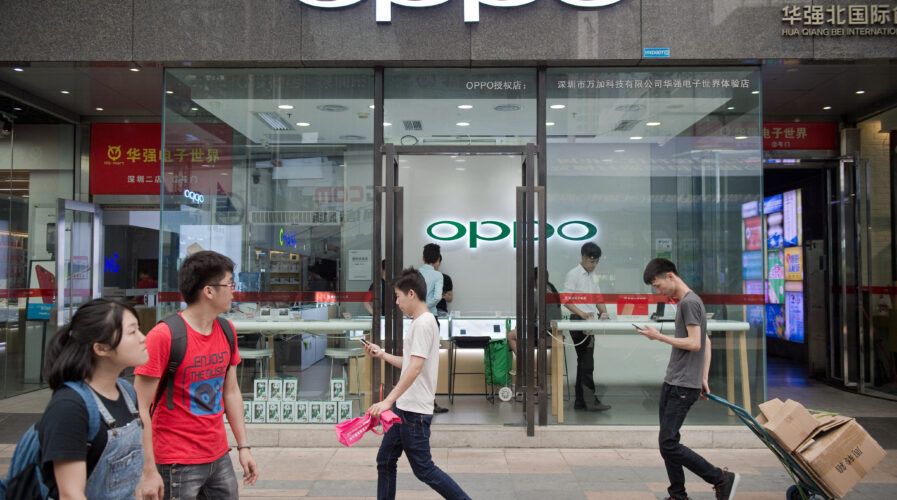
Oppo joins the semiconductor race in China with its own in-house built chipset. (Photo by Nicolas ASFOURI / AFP)
Oppo joins China semiconductor race with self-built chipset
- The MariSilicon X chip is a neural processing unit that aims to boost photo and video performance through machine learning.
- Manufactured by TSMC’s 6-nanometer process technology, the chip will be featured by the first quarter of 2022.
- The ongoing global chip shortage will not affect the production of MariSilicon X.
For years, there has been a state-led drive to achieve semiconductor independence in China. Then came the pandemic and almost every other month there is news on Chinese tech giants venturing into their own chip side-gig.
The most recent, though, is Chinese phone maker Oppo, who launched its first self-developed chip last week, known as the MariSilicon X.
As more companies in China strive to achieve semiconductor supply autonomy amid a global chip shortage, Oppo aims to continue increasing investment in developing chips in-house.
At the two-day Oppo Inno Day 2021 last week, founder and CEO Chen Mingyong said the name of Oppo’s chip is inspired by the Mariana Trench, the deepest place in the sea in the world, reflecting the difficulties of developing a chip.
“The birth of MariSilicon X signals that Oppo has entered the ‘deep waters’ of R&D. Technology companies must solve key problems with breakthroughs in key technologies. Without core technology there can be no future,” Chen said.
The chip is being manufactured by Taiwan Semiconductor Manufacturing Co (TSMC) using its 6-nanometer process technology.
It is the first NPU (neural processing unit) chip designed for imaging at the mobile terminal. It will be featured on the latest series of Oppo’s high-end flagship Find X devices in the first quarter of 2022.
The chip is almost 20 times faster and halves energy consumption for some tasks relative to Oppo’s previous top-of-the-line smartphone, the company said in a statement.
To top it off, Oppo said the MariSilicon X can produce AI-assisted 4K night videos with a high dynamic range, applying image enhancements typically seen on still images to moving pictures.
The MariSilicon project in China is being headed by Qualcomm veteran Jiang Bo.
However, he told reporters that the ongoing global semiconductor chip shortage, even in China, will not affect the production of MariSilicon X. The Chinese phone maker isn’t the first one to have plans on developing in-house chips.
In fact, other domestic phone makers like Xiaomi and VIVO have also released their self-developed imaging chips, the Xiaomi Surge C1 and VIVO V1 respectively.
Analysts reckon that in-house development of critical chips could also strengthen supply chain controls and potentially ease widespread shortages and disruptions.
Overall, the pandemic, if anything, has fueled a huge need for self-sufficiency, especially among technology giants that are often stuck in between the supply and demand conundrum.
READ MORE
- Ethical AI: The renewed importance of safeguarding data and customer privacy in Generative AI applications
- How Japan balances AI-driven opportunities with cybersecurity needs
- Deploying SASE: Benchmarking your approach
- Insurance everywhere all at once: the digital transformation of the APAC insurance industry
- Google parent Alphabet eyes HubSpot: A potential acquisition shaping the future of CRM


